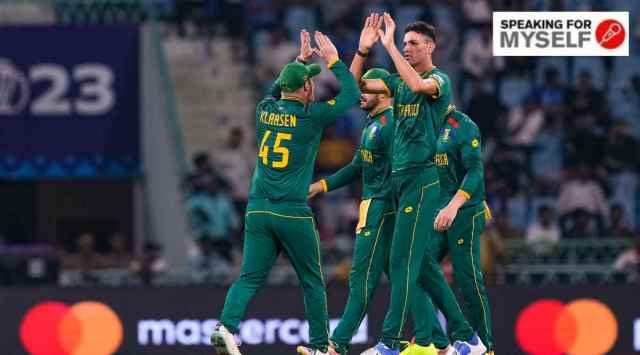
I am a fan of cricket. I watch the game religiously (not just the teams I support), read about it, muck around with stats, listen to podcasts — cricket takes up a large chunk of my time. Yet, over a week into the ODI World Cup, I am neither excited nor surprised that I am not.
A World Cup in India should be a big deal. But I do not feel the buzz. And no, it is not just because of the BCCI’s shambolic organisation of the tournament — though that has played a part. There are a few fundamental problems with ODIs and international cricket at large that have driven me to a degree of apathy with regard to the tournament this year.
When T20s first entered our consciousness, analysts were quick to predict the demise of Test cricket. Yet it is ODIs that have undoubtedly suffered the most.
Test matches receive — and always will — the unconditional love of the traditionalists, and the sport has a fair few of them. There are many who see the five days of a Test match as a metaphor for life, with constant ups and downs, and unmatched narrative potential. Many more admire the relentless grind that Tests reward.
T20s, on the other hand, are the perfect game for our short attention spans. With every ball promising action, they entertain like nothing else. For younger fans, perhaps fans who have never watched a Test, T20s are the perfect entry to the sport — and a crucial one. Cricket has historically been looked down upon beyond the Anglosphere as boring and complicated. T20s are changing that perception, bringing in fans from around the world.
But where do ODIs stand?
If T20s are your standard mass entertainer, Test matches Scorsese’s The Irishman, ODIs are stuck in the middle. That’s not a good place to be. They are neither happening nor short enough to prevent me from scrolling on my phone during games. They are also not epic enough to make action that does take place more meaningful.
The matches reflect this problem. Most of the action in an ODI innings happens in the first 10 and last 10 overs. Batting sides take more risks, score faster, and lose more wickets in this period, while bowling sides try to take wickets rather than simply contain them. Often, in overs 11 to 40, the game simply meanders, almost like there is an unspoken truce between the two sides. Batters milk bowlers for singles and doubles, and bowlers are happy with that, regardless of how many wickets fall. Now, what would you get if you simply remove the boring 30 overs in between? The 20-over game.
This is, of course, an oversimplification. Good sides, like England in the 2019 World Cup, continue to smash runs and take wickets in the middle overs, and a lot of thinking goes behind deciding when to attack and when to hold back. Yet, as a viewer, often, ODIs are simply not captivating enough.
ODIs are closer in form and spirit to T20s. That makes comparisons almost inevitable, unlike with Test cricket. From this perspective, they look like a watered-down version of T20s. When I see a required run rate of eight an over with 10 to go, it simply does not catch my attention — despite how much the commentator might try and sell it.
But the format alone is not to blame for my apathy towards the World Cup. There are some fundamental problems with international cricket, which diminish the quality of the game itself.
First, the lack of competitive balance. There is a certain inevitability to the outcomes of big tournaments that have made them far less compelling than before. It is not as if there were no dominant teams in the past. But today, the situation is slightly different. The structure of the World Cup is such that it almost completely precludes upsets. There is basically a round-robin of 10 teams where everyone plays everyone, and the best four go on to the semi-finals. This means that favourites can theoretically drop four games and still reach the semis. Given how skewed the economy of cricket is, this almost certainly favours the big teams — and that is exactly why this format was introduced.
Second, in India specifically, cricket has become an arena sullied by the politics of our time. I dread Indo-Pak contests because of that — Shaheen Shah Afridi is my favourite bowler but I think twice before praising him, lest I be called “anti-national”. And I am an upper-caste Hindu man, not, say, a Kashmiri Muslim who has to prove his patriotism every time India plays Pakistan. As seen in the incident in Feroz Shah Kotla during the India-Afghanistan match, the vitriol in our society often makes its most naked appearances on a cricket stadium.
Put together, these are the reasons I am not pumped for the World Cup. Yes, I am and will watch some games. I might even enjoy a few. But unlike previous years when weeks, sometimes months, would go in anticipation of a game, I do not look forward to a single one this time around.
arjun.sengupta@expressindia.com